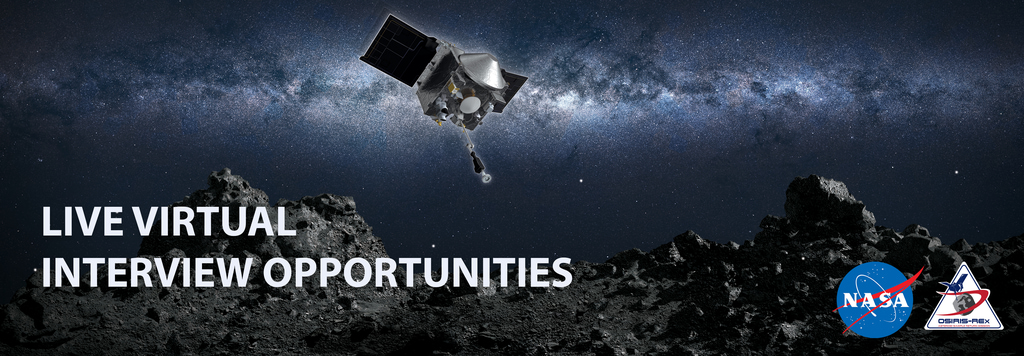OSIRIS-REx Leaves its Mark on Asteroid Bennu
New images taken by the OSIRIS-REx spacecraft on April 7, 2021 show how the spacecraft's Touch-and-Go (TAG) sample acquisition event impacted the surface of asteroid Bennu.
Music is "Go for Launch" by David Scott Butler of Universal Production Music
Watch this video on the NASA Goddard YouTube channel.
Like boot prints on the Moon, NASA's OSIRIS-REx spacecraft left its mark on asteroid Bennu. Now, new images — taken during the spacecraft's final fly-over on April 7, 2021 — reveal the aftermath of the historic Touch-and-Go (TAG) sample acquisition event from October 20th, 2020.
Learn more about this observation.
Shorter version for Instagram.
Music is "Go for Launch" by David Scott Butler of Universal Production Music

Bennu's surface was disturbed in three different ways: by the force of the spacecraft touching down; by the sampling mechanism, which collected material by blowing gas into its collection filter; and by four of the spacecraft's back-away thrusters, which moved the spacecraft away from the sample site (marked with a red "X" in the second of these two images) and agitated dust and boulders on the surface.
Sample site Nightingale before and after TAG, without the red "X" and circle. The original aspect ratio of the images is preserved. Available with and without the scale bar.

View of the Nightingale sample site before the TAG event. Images were taken on March 7, 2019, by the spacecraft’s PolyCam instrument, as part of the mission's global mapping campaign.

View of the Nightingale sample site after the TAG event. Images were taken on April 7, 2021, as part of a final observation campaign to document the state of the surface after TAG.

The Nightingale sample site before the TAG event. The red circle indicates a boulder that was shown to have been displaced during the TAG event (the same boulder is shown in a red circle in the after image).

The Nightingale sample site after the TAG event. The red "X" indicates the approximate location where OSIRIS-REx contacted the asteroid's surface. The red circle shows the same boulder that was circled in the before image.
For More Information
See NASA.gov
Credits
Please give credit for this item to:
NASA's Goddard Space Flight Center
-
Producer
- James Tralie (ADNET Systems, Inc.)
-
Editor
- James Tralie (ADNET Systems, Inc.)
-
Narrator
- James Tralie (ADNET Systems, Inc.)
-
Writers
- Mikayla Kelley (The University of Arizona)
- Rani Gran (NASA/GSFC)
-
Image processing
- Dathon Golish (The University of Arizona/LPL)
- Dan Gallagher (USRA)
-
Animators
- Walt Feimer (KBR Wyle Services, LLC)
- Jonathan North (USRA)
- Adriana Manrique Gutierrez (USRA)
- Jacquelyn DeMink (USRA)
-
Art director
- Michael Lentz (USRA)
-
Visualizer
- Kel Elkins (USRA)
-
Principal investigator
- Dante Lauretta (The University of Arizona)
-
Scientists
- Jason Dworkin (NASA/GSFC)
- Michael Moreau (NASA/GSFC)
-
Technical support
- Aaron E. Lepsch (ADNET Systems, Inc.)
Release date
This page was originally published on Thursday, April 15, 2021.
This page was last updated on Wednesday, May 3, 2023 at 1:44 PM EDT.
